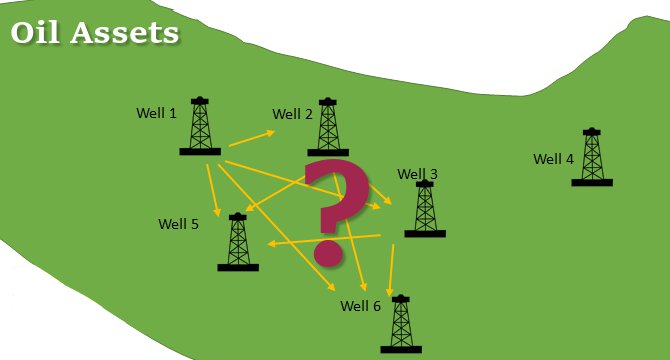
A common and challenging decision problem in the oil & gas industry is to decide how to explore an oil field. Typically there is a cluster of prospects, giving rise to a highly dependent set of uncertainties, according to their proximity and the geology of the area. For example, if you drill a well at one site and strike oil, it’s more likely that a nearby prospect will also have oil. If you drill a few “dry holes”, you’ll probably give up on the field rather than throw good money at potentially poor prospects. This makes intuitive sense, but until recently it was tough to model in a decision tree.
A well known paper on this subject was written by two veteran decision analysis researchers, Eric Bickel and Jim Smith (Optimal Sequential Exploration: A Binary Learning Model). In the paper Bickel and Smith were able to determine the optimal exploration strategy using a dynamic programming approach. (Much of the hard work is in constructing the joint probability distribution without asking the geologists hundreds of questions, but that’s outside the scope of this post.) Suppose you wanted to solve such a model in a DPL decision tree, how would you proceed?
A year ago, modeling this kind of problem in DPL was admittedly awkward – mainly due to the fact that you can’t have the same event (decision or chance) more than once on any path in a decision tree. See the decision tree doodle to the right.
If you consider the second instance of Well 1 (w~1~) in the tree, all of the paths leading to that point have already encountered the first instance of Well 1 so it’s already in a known state on those paths – it doesn’t make sense for it to be uncertain again. While that’s the way a classical decision tree works, we know what you mean – when you drill the second well, you can pick from among all the wells except the one you’ve already drilled.
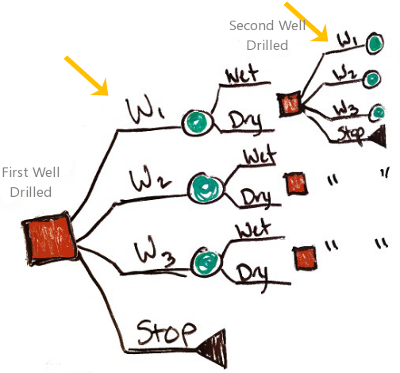
You could brute force the tree, creating a bunch of dependent decisions (Second Well given w~1~, Second Well given w~2~, etc), but that would quickly get out of hand as the number of prospects grew.

After some serious chin scratching, Chris came up with a clever feature that allows analysts to model these types of sequential drilling problems with much greater ease. Within the DPL Enterprise version there is a setting that will “Allow event already active and halt with penalty value”.
In other words DPL will stop evaluating a path in the tree (i.e., halt) if it encounters an event twice, and will apply a penalty value (typically a large negative number) at that point. That filters out paths where we try to e.g., drill Well 1 twice – paths that don’t make sense.
It’s important to note that the decision tree needs to be set up asymmetrically so that the well uncertainties are only encountered once as you drill them. The image below shows how you’d set up the tree for a 3 well example. The letters within the decision nodes are perform references. These indicate that a subtree has been copied and “performed” at that point in the tree – which comes in handy for a large complicated tree such as this. Note: this is a simplified version of the 6 well example in the Bickel & Smith paper.
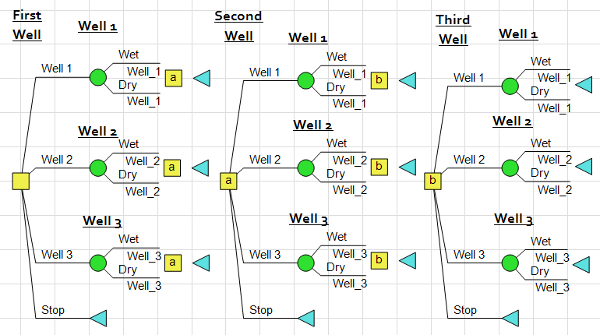
An analysis of this model results in the following Policy Tree:
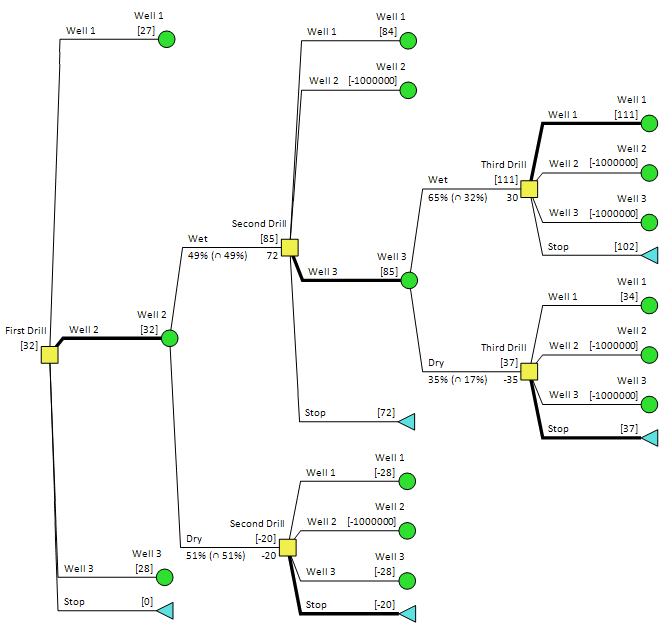
This output tree clearly shows us via the bolded lines that the optimal policy is to drill Well 2 first, if it’s wet proceed with Well 3 and if it’s dry we should stop. Similarly, if both Well 2 and 3 are wet we should go ahead and drill Well 1. If Well 3 is found to be dry, the best policy is to stop.
When comparing our DPL model to that in the Bickel and Smith paper, we found that we were able to match their results in the example with 6 wells. Furthermore, we found the outputs of the model in DPL (i.e., Policy Tree, and Initial Decision Alternative charts) offered a very intuitive means of displaying optimal policy information. The ability to create cumulative probability distributions for each initial decision alternative was a nice bonus that gave us a very attractive looking chart!
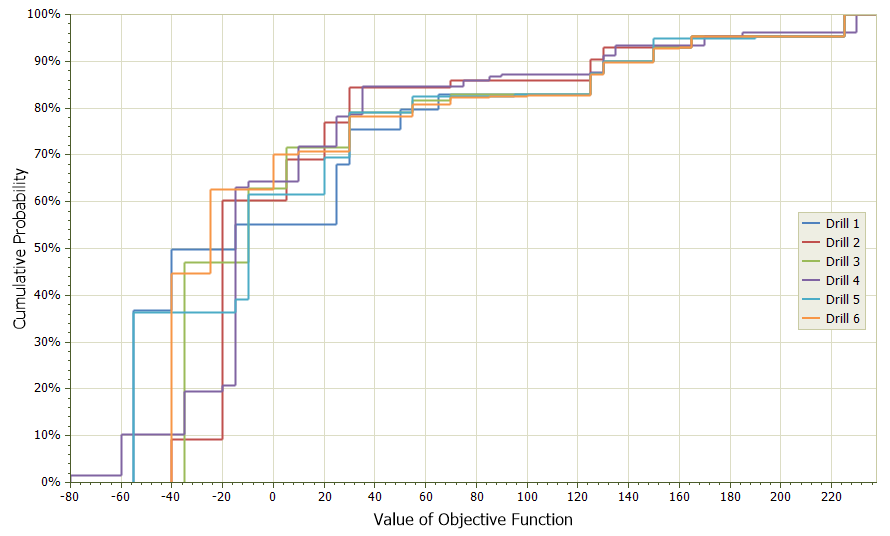
If you’d like to take a more in-depth look at the Sequential Drilling model built in DPL, you can use the following link to download the Workspace. It contains two models: one for 3 and one for 6 wells.
If you don’t have the DPL Enterprise software, please send an email to sales@syncopation.com to request a free, temporary trial license.